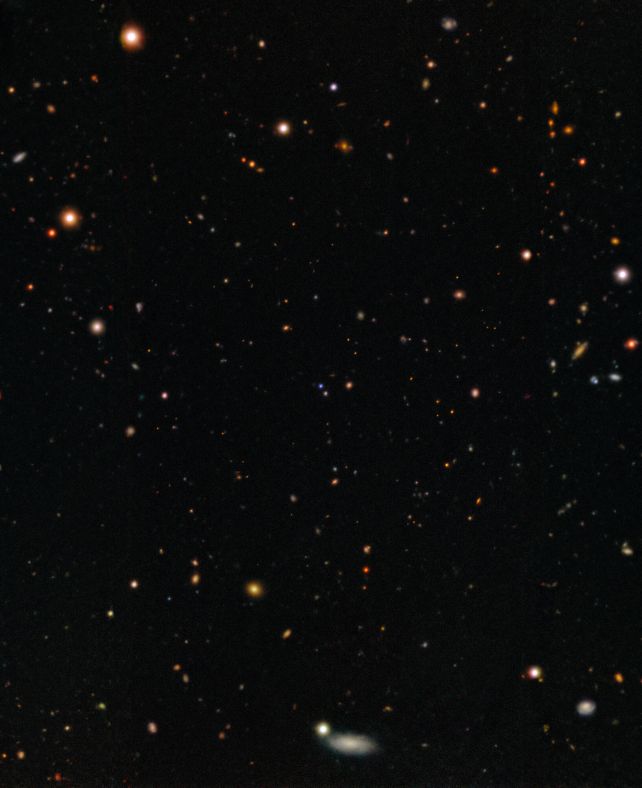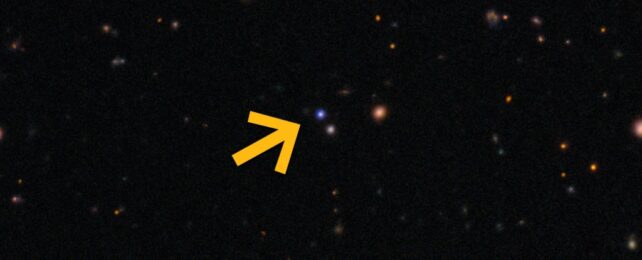Jets that failed to punch through the outer shell of a dying star are the sources of mysterious X-ray flashes that have puzzled astronomers for decades.
A new study of a star undergoing the throes of a supernova death has revealed that bursts of X-radiation known as fast-X-ray transients (FXTs) are the result of a failed gamma-ray burst (GRB) – the most energetic explosions our Universe can produce.
"Since the 1970s, astronomers have detected FXTs – blasts of X-rays from distant galaxies that can last from seconds to hours," says astronomer Jillian Rastinejad of Northwestern University in the US.
"But their sources have remained a long-standing mystery. Our work definitively shows that FXTs can originate from the explosive death of a massive star. It also supports a causal link between GRB-supernovae and FXT-supernovae, in which GRBs are produced by successful jets, and FXTs are produced by trapped weak jets."
Related: Brightest Space Explosion Ever May Hide an Elusive Dark Matter Particle

A supernova is not one single, done-and-dusted affair; the eventual implosion of the stellar core, and outward expulsion of the material around it, are presaged by a long period of instability in which the star shucks its outer layers. When the star does eventually hit that supernova point, jets blast outward from the collapsing core, punching through the outer layers and out into interstellar space.
Those jets are what produce the GRBs, causing the material around the star to blaze with radiation as it is shocked by the powerful outflows.
The detection of an event on 8 January 2025 was fortuitous for our understanding of the way these energetic explosions can go wrong. An X-ray telescope on the Einstein Probe caught an FXT from 2.8 billion light-years across the Universe.
Scientists immediately rushed in to take advantage of the opportunity to learn more about these enigmatic flashes, using a suite of telescopes to record the event across multiple wavelengths.
"It's important to note that X-ray data alone cannot tell us what phenomena created an FXT," Rastinejad explains. "Rapid observations of the location of the FXT at optical and infrared wavelengths are key to identifying the aftermath of an FXT and assembling clues to its origin."

The FXT was named EP 250108a, and, as the evolving dataset revealed over the ensuing weeks, it was associated with a supernova event named SN 2025kg – affectionately nicknamed The Kangaroo.
The researchers found that the supernova was a particularly rare and energetic variety known as a Type Ic-BL supernova, originating in the core collapse of a massive star between 15 and 30 times the mass of the Sun.
The observations also revealed a high-speed outward explosion of ejecta, moving at almost 19,000 kilometers (11,800 miles) per second.
Such supernovae are usually the origin of GRBs, and so the researchers found.
"This FXT supernova is nearly a twin of past supernovae that followed GRBs," says astrophysicist Rob Eyles-Ferris of the University of Leicester in the UK. "Our observations of the early stages of EP 250108a's evolution show that the explosions of massive stars can produce both phenomena."
The team's analysis showed that, rather than punching through the layers of ejected star material as seen in a GRB, the jets that erupted from the core of this particular dying star remained trapped inside the shell of ejecta. This trapped jet still shocks and heats the cocoon around it, just not to GRB levels.

Although GRBs have been seen and studied in pretty intricate detail, we don't know much about how they can fail. The discovery of EP 250108a and SN 2025kg gave astronomers the evidence they needed to estimate that, actually, the GRB failure rate is higher than success.
"Through decades of scientific study, we know that jets can successfully plow through a dying star's outer layers, and we view them as GRBs," Rastinejad says. "In our study, we found this 'trapped' jet outcome is more common in massive star explosions than jets that successfully emerge from the star."
This is really exciting because it means that we have a new means of probing supernova explosions. Although we now know a little more than we did about FXTs, the minutiae about how they form, and what makes a star sputter out an FXT rather than a GRB still need to be figured out.
"This discovery heralds a broader understanding of the diversity in massive stars' deaths and a need for deeper investigations into the whole landscape of stellar evolution," Eyles-Ferris says.
The analyses have been detailed in two papers accepted into The Astrophysical Journal Letters and available on arXiv. They can be found here and here.
